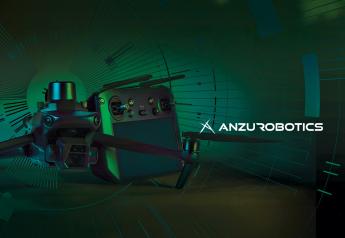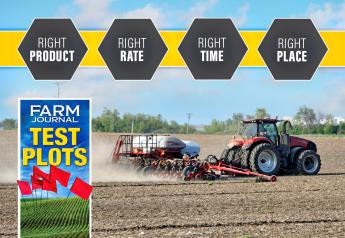PrecisionHawk announces partnership with DJI

UAV companies are starting to make news. That's key as the U.S. Federal Aviation Administration gets closer to its new final rules for operating these versatile eyes in the sky.
PrecisionHawk and DJI are coming together to provide what they're calling an easy-to-use drown and data package for use by farmers. PrecisionHawk is the fixed-wing drone maker that has innovated the industry with its auto-flying airships. DJI manufactures multi-prop hovering UAVs used by a wide range of industries.
The new partnership is about software. PrecisionHawk has developed control software for two DJI drone models - the Matrice M100 and M600 - to operate the machines and manage the imagery captured. "Our mission as a company is to be a leading data analytics platform for aerial information collection in agriculture," says Patrick Lohman, vice president, partnerships, PrecisionHawk. "That's what spurred this partnership to create an enterprise hardware solution."
Adds Adam Lisberg, director, communications, DJI, "This is a huge step forward for those with a commercial interest." He explains that the UAV industry has been filled with leading-edge users who did a lot of "hack and rehack" to fly, but with this new partnership anyone will be able to get a UAV up and flying to capture information.
The two firms have entered into an exclusive partnership for the ag market to link DJI's commercial-grade drone hardware to PrecisionHawk's drone software platform - DataMapper. Called the "Smarter Farming" package will include the DJI Matrice drone (M100 or M600) the new DataMapper Inflight app for data collection and a one year subscription to DataMapper for data management analysis.
Adds Lohman: "By combining our strengths - DJI's world-renowned hardware and PrecisionHawk's seamless software tools that bridge the gap from flight to geospatial data analysis - we are effectively eliminating any major barriers to entry and allowing the industry to begin adopting this technology in their everyday workflows on a broader scale."
Branching out
PrecisionHawk hasn't been known for playing in the "pro-sumer" end of the drone market. Lohman explains that his company's planes are not cheap but have been popular with ag clients (more on that below). "We wanted to bring the great data analytics that serve ag and offer them to the farmer level," he says. "We knew we would eventually get to working with lower cost hardware to [penetrate] the market."
That choice was DJI maker of the popular Phantom drone, but the Matrice is a higher payload design. Lisberg explains that the M100 and M600 (the M600 is shown above) can carry more weight and operate for a longer period of time. "There's a big difference between a 20 minute operating time and a 40 minute operating time," he notes.
These drone models are heavy-duty workhorses. The
M600 can carry up to 13 pounds. "It can carry a pro cinema or video camera and has been used in major Hollywood films for aerial shots. We call it a heavy lifter," Lisberg says. He adds that DJI has even developed its own spraying platform - the Agris system (but PrecisionHawk is not working with that system yet).
DJI had created a software developer's kit for the Matrice series, which PrecisionHawk started working with. As part of the partnership announcement, PrecisionHawk has launched an app that allows farmers to control a Matrice machine - set a flight plan and capture information into its software
Lohman explains that a software developer's kit provides for the "low-level stuff" to make sure the machine stays in balance and stays in the air. "And then we wrote an app that tells the drones what to do. Flick a button and it takes off, tell it all the waypoints - we handle the geometry calculations - and it takes a path to take the pictures and comes back and lands where you tell it to land."
Operation becomes simpler, but Lohman adds that PrecisionHawk's DataMapper software is where farmers get more value. The software - which recently got a significant financial boost from a round of financing that included DuPont Pioneer - takes all the images taken by a drone and not only stitches them automatically but provides analytics for the user.
"We've taken the human out of the loop for gathering the information," Lohman says. "We're working to make things more automated." With the new DataMapper Inflight app, a user can create a flight plan and autonomously collect geospatial data. The images are viewable in DataMapper where they are processed into 2D and 3D maps and ready for further analysis. Users also have access to DataMapper's library of analysis algorithms that provide details information around the major decisions a farmer makes during the season.







